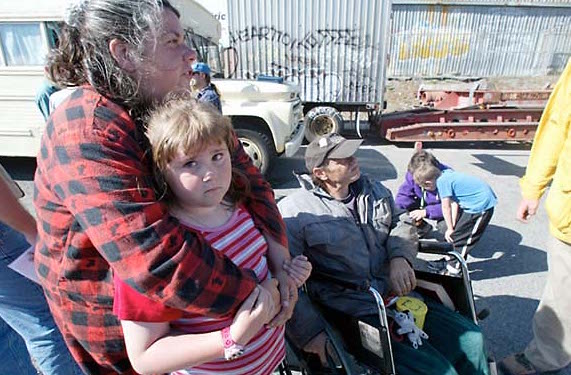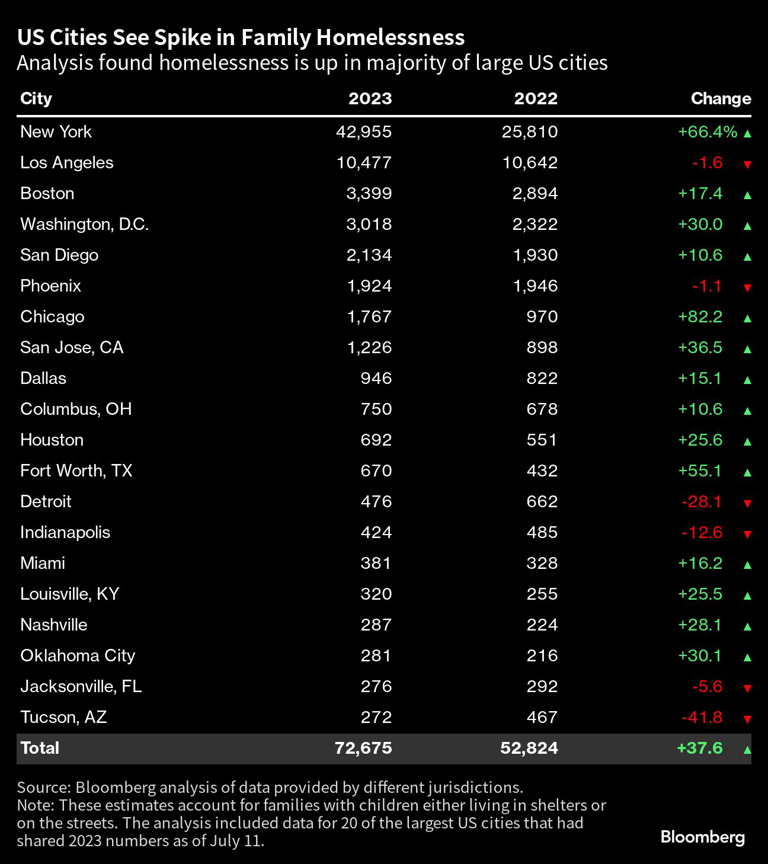
In the midst of escalating expenses, a dwindling housing supply and the expiration of pandemic-era benefits, family homelessness is dramatically on the rise in the United States.
An analysis of data from 20 of the largest U.S. cities reveals a 37.6 percent surge in homelessness among families with children, with over 72,700 individuals affected as of January 2023. New York witnessed a two-thirds spike, while Chicago, the District of Columbia, and Fort Worth, Texas, also experienced significant increases.
These findings, based on data collected from cities conducting counts of individuals in shelters or on the streets, paint a grim national scenario.
Kathy Johnson, executive director of Oak City Cares, a North Carolina-based nonprofit aiding individuals experiencing homelessness, highlighted the precarious financial situations of many Americans.
“There were many, many, many people that were already just barely making it,” she said. “And then when inflation hit and the economy changed, those people who were just on the edge teetered over.”
More and more families are facing a growing crisis. According to the Department of Housing and Urban Development, an estimated 161,000 Americans in families with children experienced homelessness in 2022. While these figures marked the lowest since 2007, experts warn that accurate counts were challenging during the pandemic. The Department of Education adopted a broader scope, which includes individuals living in motels or with relatives due to a lack of housing, and reported that approximately 1.1 million children were homeless during the pandemic.
The growing number of homeless families could have long-term implications for the development and well-being of all American families, too. Each person experiencing chronic homelessness costs taxpayers almost $36,000 annually, requiring additional resources for every new individual who becomes homeless.
In an attempt to break this cycle, the Biden administration introduced a plan last year to reduce overall homelessness in the U.S. by one-fourth by 2025. The plan includes expanding access to housing vouchers, simplifying the application process for government assistance programs and other initiatives.
Terence Lester, author of When We Stand: The Power of Seeking Justice Together, spoke with RELEVANT about how the Church can better address the rising homelessness crisis.
“Just because a person doesn’t have an address does not mean that they’re not your neighbor,” he said. “When Jesus says, ‘Love your neighbor,’ he’s also talking about people who are experiencing homelessness.
“I think what we have to do, as believers, is see people who are living on the streets the same way you would see someone sitting next to you in church holding a cup of coffee,” he continued. “God doesn’t love the person next to you in a church that drove there anymore than the person who had to sleep behind a building. And if we are really going to be about loving our neighbors, that also includes people without an address.”
























